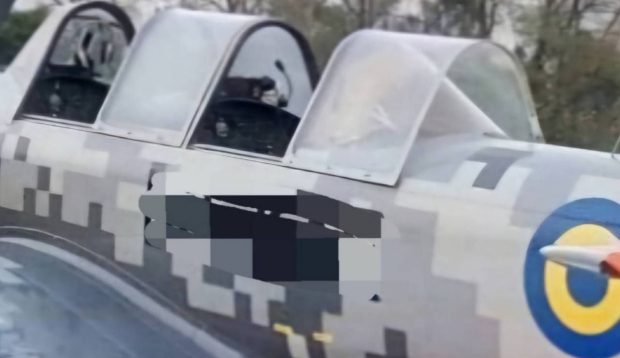Unconventional Warfare in the Skies: The Ukrainian Yak-52 vs. Russian Drone
In a remarkable turn of events over Odessa, a creative new tactic emerged in the ongoing conflict, harkening back to old-school methods of combat. A Ukrainian Yak-52, typically used for training and sports flying, successfully engaged and shot down a Russian Orlan-10 reconnaissance drone. This incident highlights not only the ingenuity of Ukrainian forces but also the necessity for adaptation in modern warfare.
A Historic Moment in Modern Warfare
As reported by «Dumskaya,» the Yak-52 executed a daring maneuver, circling the drone that was descending on a parachute. Social media platforms lit up with videos capturing this unconventional showdown, showcasing a propeller plane taking the role usually reserved for advanced military jets. What’s fascinating is that, in an era defined by drones and high-tech weaponry, such a historic tactic seemed almost like a scene from World War I.
The Evolution of Tactics
Official statements from Air Force representatives are still pending, but experts in military strategy are drawing parallels to earlier conflicts. A veteran of the Anti-Terrorist Operation (ATO) remarked, «Ukrainians continue to demonstrate creativity and inventiveness. Today’s downing of the enemy drone is yet another example of repurposing tactics from a century ago.» His words emphasize how operational constraints force armies to innovate in ways that blend the old with the new.
- Emergency Adaptation: Facing a shortage of modern short-range air defense systems, the Ukrainian military is turning to historical tactics to defend against aerial threats.
- Skill and Precision: Successfully shooting down a drone with small arms from a Yak-52 requires not just luck but a high level of pilot training and expertise.
- Teamwork and Coordination: Effective operations like this hinge on teamwork; the effective communication between the pilot and ground support is crucial in high-stakes scenarios.
The Yak-52: More Than Just a Training Plane
The Yak-52M, primarily designed for training and sporting purposes, has proven to be an unexpected asset in the face of aerial threats. Its tandem cockpit setup allows for excellent visibility and coordination between pilot and co-pilot, creating a platform from which to launch creative defense operations. The successful downing of a drone serves as a testament to the skill and adaptability of the crew involved.
Lessons in Creativity and Innovation
This incident teaches us valuable lessons about the nature of warfare in the modern age. It highlights several key factors:
- The Power of Adaptability: Necessity is the mother of invention. Outdated machinery can find new life in unexpected roles, showcasing the importance of flexible tactics in combat.
- Emphasis on Training: Experienced pilots and ground crew working together can turn the tide, proving that human skill remains irreplaceable in warfare.
- History Repeats Itself: We are reminded that many successful strategies have their roots in the past, and that today’s challenges can often be met with lessons learned from yesteryear.
As the conflict continues, these innovative tactics, rooted in both creativity and historical precedence, could shape the future of aerial combat. A blend of old and new strategies may well be the key to survival and success in the increasingly complex arena of modern warfare. With resourcefulness at its core, the Ukrainian military is setting an inspiring example of how to navigate the challenges of today’s battlefield.






